![]()
Andrea Raggi works as SEA Manager at the Mobile Growth Consultancy and App Store Optimization (ASO) agency Phiture. Andrea has a MSc in International Marketing and Management at Copenhagen Business School. Andrea gained experience in User Acquisition by working on Facebook Ads, Google Ads and Apple Search Ads in the Performance Marketing team at Factorymarket. At Phiture, Andrea is managing Apple Search Ads for several clients.
- What is Limit Ad Tracking (LAT) in Apple’s iOS operating system?
Have you ever wondered what Limit Ad Tracking (LAT) is on Apple’s iOS devices and how it affects advertisers? Before getting into that, we need to start from scratch. Advertising networks like Apple or Facebook keep track of a considerable amount of information about you, including your location, your age, your gender and which product and apps you own. This information is stored and then used to show you relevant ads based on the things you like. The underlying reason is maximizing value for the ad networks. The higher your interest in the ad, the higher the likelihood you will click on it, which in turn will generate revenue for the ad networks. Therefore, in order to serve ads that are relevant to you, these networks collect data to build advertising audiences. The audience to which you are assigned determines which ads you will receive. This will mainly depend on your interests as well as your recent activities (meaning that if you showed interest in a product, it is highly likely that ads will be customized according to your taste). This practice is called targeted advertising.
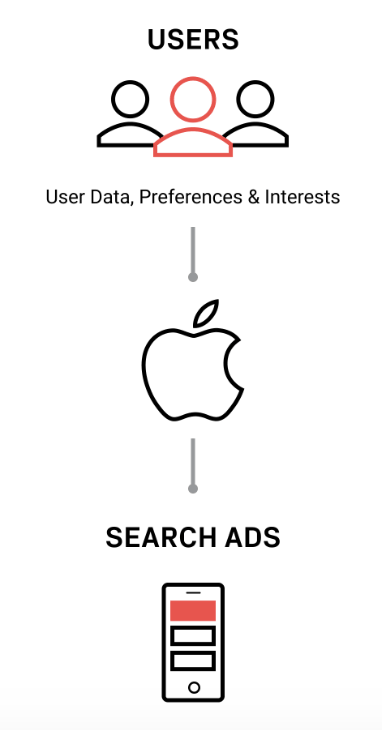
But then what is LAT and how is it related to targeted advertising? An expert in the sector, the Mobile Measurement Partner Adjust, can come to our rescue in this case: “Limit ad tracking (LAT) is a feature allowing users to opt-out of having an ID for Advertisers (IDFA). With this setting enabled, the user’s IDFA appears blank when tracked. This means they won’t see specific ads targeted at them because, as far as networks see, the device has no identity.” In other words, when activating the LAT option you are ultimately stating that you do not want to be tracked and you do not want to belong to a certain audience.
- An overview of the LAT ON development over time
The LAT ON setting has been gaining popularity after scandals such as the Facebook–Cambridge Analytica data scandal, which raised public awareness on the importance of data protection and privacy. The news was revealed On March 17, 2018 by the Guardian and the New York Times. To show the real impact generated by LAT ON on Apple Search Ads advertising, SearchAdsHQ kindly provided Phiture with data regarding LAT ON traffic. Their data source is composed of 7 million aggregated downloads from their clients.
As you can see in the graph below, after March 2018 there is a steady rise of LAT ON users which increased from 17% up to almost 34% in January 2019 in the US. That is a significant expansion, clearly showing the development of privacy concerns over time. While the LAT ON share seems to have stabilized at around 34%, external factors, like another privacy scandal, might cause another increase in LAT ON over time.
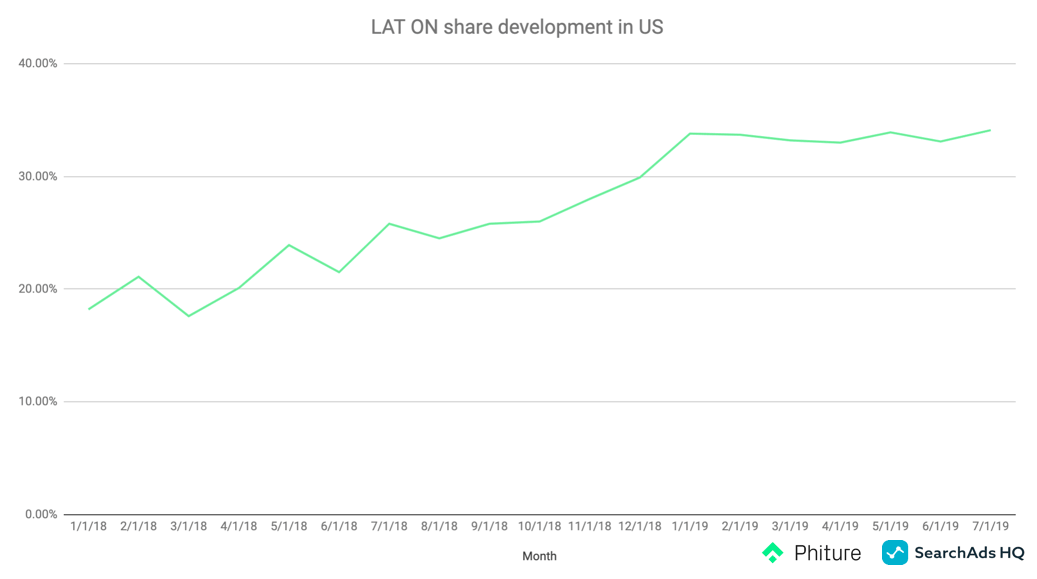
As is the case in the US, Australia, Canada, Germany, France, the UK and Mexico are also witnessing the rise of LAT ON. As you can see from the chart below, all the selected countries have experienced a LAT ON share increase over the last 2 years. Some of these such as the UK, Canada and Mexico seem to have been directly impacted from the Cambridge Analytica scandal in March 2018. Other countries do not seem to have been directly affected by that event but they started having a visible increase after September 2018, once Facebook claimed that “hackers exploited a series of bugs to access the Facebook profiles of some 30 million accounts” as Wired reports. In the image below you can track the LAT ON share development over time in Australia, Canada, Germany, France, the UK and Mexico.
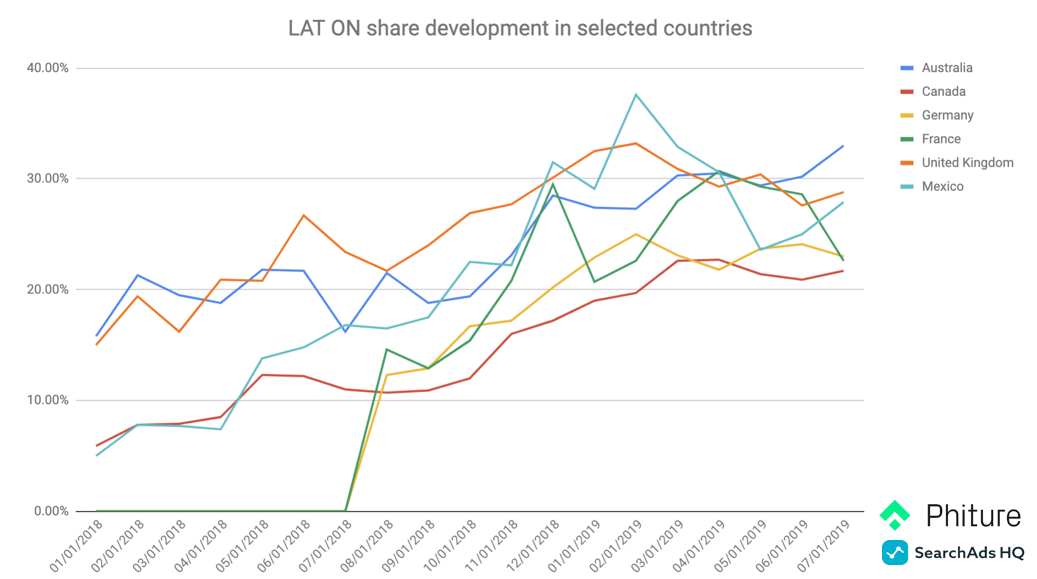
So, how do users activate the LAT ON feature in your Apple device? In a section called “Advertising” if you go to “Settings” and “Privacy Options”, you can activate Limit Ad Tracking by toggling on the option (see picture below).
![]()
III. Apple Search Ads (ASA) advertising and LAT targeting pros and cons
If you are an advertiser utilizing Apple Search Ads, LAT ON traffic might be very interesting to target, but it can also bring a few headaches if you are not entirely considering all of the implications.
In performance marketing, advertisers try to optimize their ad spend based on the performance of their campaigns. They track what they spend on the campaign, attribute the acquired user to the campaign, and measure what the user does and how they monetize in the app. This way the advertiser can calculate a Return-on-Ad-Spend (ROAS) on a campaign and decide whether to invest more into that campaign or not.
When acquiring a LAT ON user from a campaign, advertisers won’t be able to see with the Apple Attribution API or their Mobile Measurement Partner (MMP) where that user came from (due to the privacy protection enabled by Apple). Therefore, this user will be added into the bucket of organic unclassified users and the revenue he/she generates won’t be attributed to the success of the campaign. You will still be able to see the download in Apple Search Ads, but for modern mobile performance marketers, downloads or cost-per-install (CPI) are not the core KPIs they want to optimize for. This can be an issue if you are specifically trying to: 1) measure the percentage of ROAS these users generate and/or 2) to observe if these users convert into a signup or subscription.
So how do you exclude LAT ON users from showing up in your campaigns?
There is no hint in Apple Search Ads’ interface on how to do it, but basically by enforcing any kind of Demographic targeting you will not reach LAT On traffic. One interesting finding we have experienced at Phiture is that when having location targeting on Berlin, but also demographic targeting set to “all” (meaning LAT ON would be switched on), LAT ON would prevail on the location setting.
In sum, in order to include this traffic, you have to set in each of your ad groups’ settings “all” when setting age range (see picture below). This would allow you to target LAT ON as well as LAT OFF inventory.
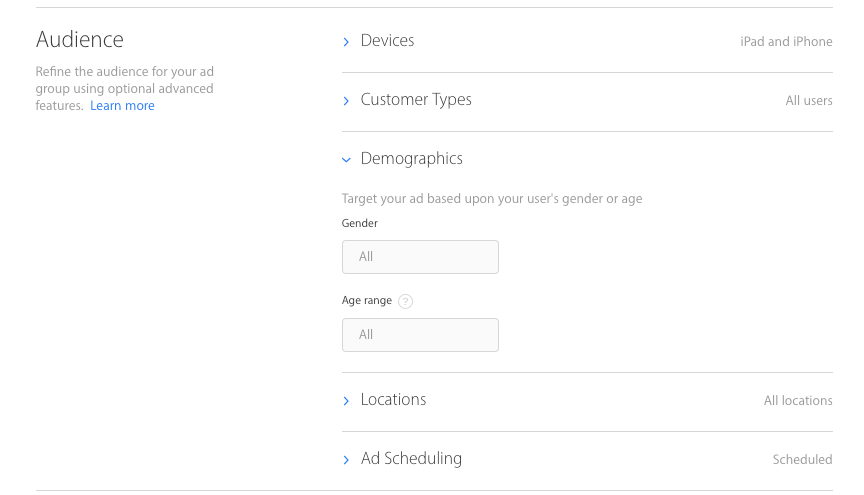
According to the reasoning above you may have inadvertently avoided this LAT ON traffic. Not targeting LAT can be a restricting decision which will lower your ASA potential. Apple claims that on average the LAT traffic is around 20% of the total. We’ve found with the data provided by SearchAdsHQ that the number of LAT ON downloads hovers around 25% of the total, globally. As a consequence, that percentage represents a high number of users who, if not targeted, might fall into competitors’ hands. The second reason to include this portion of traffic, is that it can often be somewhat cheaper as other advertisers are not entering the LAT ON auctions because they want to be able to calculate an exact ROAS.
Clearly, the percentage of LAT users varies per industry. In the lowest represented industry (Entertainment) we are talking about 11% of LAT ON traffic. The most represented industry (Social Networking) reaches a 30% share of LAT ON, per SearchAdsHQ data.
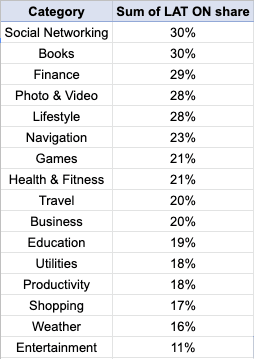
- How to extrapolate LAT ON metrics from LAT OFF data
If you still want to target LAT ON traffic and want to estimate what value those users add, you can extrapolate the likelihood of these users to complete a given event down your app’s funnel. Thomas Petit coined this concept first in a whiteboard session with Appsflyer, and it’s now been adopted widely in the industry. Let’s move to an example: let’s say we want to make an educated guess as to how many LAT users completed the event “subscription”, which will be our “goal” event.
As we do know how many subscriptions (i.e. Goals) the attributed bucket (=LAT Off) created, and what the share of LAT ON Downloads is (as Apple gives us the split of this traffic), we can guess the number of subscriptions that were created by extrapolating the LAT Off Goals from the LAT ON available data. In other words, we take the LAT off goals and estimate the LAT ON goals by taking the percentage of goal completion in LAT off as a benchmark to calculate the LAT ON goals. The formula we utilize to estimate the total goals from our accounts is the following one: Total Goals (extrapolated)=LAT Off Goals/LAT Off Downloads Share.
From the above formula you could also be able to calculate an estimated Cost Per Goal (CPG) and similarly also an estimated Cost Per Install (CPI) and ROAS which can give you more precise metrics when making analyses. See below how we do these extrapolations at Phiture.
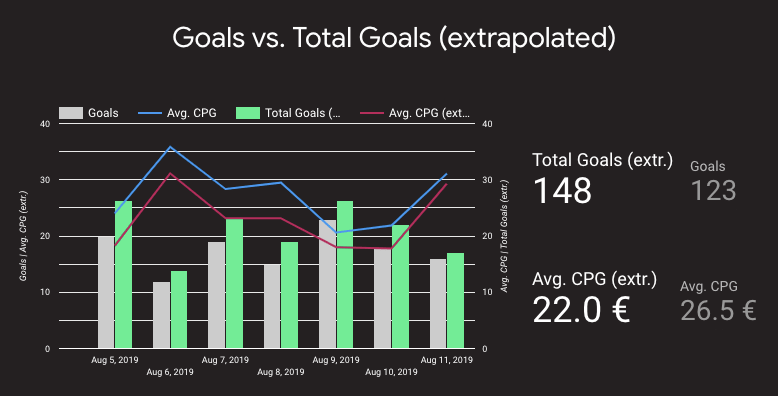
While you are able to do this on the campaign, ad group and keyword level, we have found the granular data on keyword level to be less statistical significant. Of course this is just an estimation and does not reflect 100% the true data coming in from LAT ON: can you assume that this traffic would convert just as well as their LAT Off counterpart? Most likely, there will not be a massive difference between how privacy sensitive users looking for “music app” convert into a subscription versus their less privacy sensitive counterparts. However, for some verticals like VPN software the opposite might be true, and it’s always good to fact-check your assumptions over the whole account by doing a before-after comparison when switching on LAT ON. You can look at your organic bucket and see if your goals in that bucket grew at the same pace as your LAT ON downloads came in. If your organic user base is too large, try singling out one country in which you don’t get a lot of organic downloads.
To summarize, LAT ON traffic is an asset which can be extremely valuable for your Apple Search Ads advertising. This, coupled with a systematic campaign structure, can certainly allow you to succeed with Apple Search Ads and get the most out of your Apple Search Ads account. Given the fact that LAT ON potential corresponds to around 25% of the total global ASA traffic, you would be able to target a significant number of users and expand your advertising efforts. Moreover, knowing what LAT is as well as being able to estimate its outcomes can improve your decision making and reporting. As you would be adding goals by estimating the missing data, you would also improve your performance, which would have been underestimated before the calculations!
A special thanks to Tanya and her team from SearchAdsHQ for providing the data on LAT ON traffic.
If you liked this post, leave a 👏 and share it on your social media. If you have suggestions or questions about our Apple Search Ads campaign structure, please do let us know in the comments below 👇.
Discover more about our Apple Search Ads managed services, our ASO eBook or join our Slack channel to learn more about ASO and ASA.












